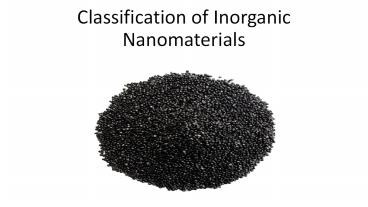Classification of Inorganic Nanomaterials - PowerPoint PPT Presentation
Title:
Classification of Inorganic Nanomaterials
Description:
This article mainly introduces the classification of inorganic nanomaterials. Visit for more information. – PowerPoint PPT presentation
Number of Views:558
Title: Classification of Inorganic Nanomaterials
1
Classification of Inorganic Nanomaterials
2
1 Introduction
- Inorganic nanomaterials have been widely used in
various fields due to their excellent mechanical
properties, optical properties, magnetic
properties, electrical properties, catalytic
properties, thermal properties and sensitivity
properties. According to different sources of
nanomaterials, inorganic nanomaterials can be
divided into two categories one is non-metallic
materials such as mesoporous silica and carbon
nanomaterials, and the other is metal materials
such as gold nanoparticles and hydroxyapatite
nanoparticles.
3
2 Non-metallic inorganic nanomaterials
4
2.1 Mesoporous silica nano-particles
- Mesoporous silica nano-particles (MSNs) are
silica nanoparticles having a particle diameter
of 10-600 nm and a pore diameter of 2-50 nm.
Interfacial polymerization is usually carried out
using a surfactant or an amphiphilic block
copolymer as a template and an inorganic source,
and finally the template is removed by high
temperature calcination or extraction to retain
the porous structure formed by the silica
skeleton. Mesoporous silica is a new type of
inorganic nanomaterial with unique network pore
structure, continuously adjustable pore size,
large specific surface area and specific pore
volume, low toxicity, and good biocompatibility
and stability.
5
2.2 Carbon nanomaterial
- Nanomaterials composed of carbon are various in
variety and form, such as graphite with sp2
structure, diamond with sp3 structure, and
amorphous carbon black. In recent years, various
new carbon nanomaterials such as graphene, carbon
nanotubes, fullerenes and carbon quantum dots
have attracted widespread attention. Carbon
nanomaterials have unique structures and
properties, such as large specific surface area,
photothermal effect and unique fluorescence
properties, so they have unique application value
in drug controlled release, fluorescent tracing,
photothermal therapy and so on.
6
- 3 Metal inorganic nanomaterials
7
3.1 Magnetic nano-iron oxide materials
- When the size of the material is as small as
nanometers, its magnetic properties change.
Magnetic nano-iron oxide materials have good
chemical stability, biocompatibility and high
magnetic responsiveness, so they have shown broad
application prospects in drug-targeted
transportation, tumor treatment, magnetic fluids
and chemical sensing.
8
3.2 Silver nanoparticles
- Silver nanocomposite particles contain 20-15000
silver atoms and they typically have a smaller
diameter of no more than 100 nm. Due to the
surface-enhanced Raman spectroscopy effect, small
particle size effect, and large specific surface
area of nano-silver, it has good antibacterial
effect. Silver nanocomposites are also antiviral,
so silver nanocomposites are widely used in many
fields such as medical devices and wound
treatment.
9
3.3 Gold Nanoparticles
- Nano gold refers to the alloy sol with a diameter
of 0.8-250 mm, which belongs to the earliest
studied species of nano-metal materials. Gold
nanoparticles has good nano-surface effects,
quantum effects, and macroscopic quantum
tunneling effects. It also has many good chemical
properties such as antioxidant activity and
biocompatibility.
10
3.4 Nano-hydroxyaptite
- Nano-hydroxyaptite (nHAP) is a ceramic porous
inorganic material with good solubility. It has
large surface energy, good biological activity
and biocompatibility, so it can be used as a
biological material for bone transplantation and
can improve the mechanical function of bones.
11
3.5 Layered double hydroxide
- The layered double hydroxide is composed of a
divalent metal ion and a trivalent metal ion, and
its layered structure has a memory effect, and
the anions between the layers are exchangeable.
It has special acidity and alkalinity,
fluorescence properties and thermal stability. It
is low in toxicity, and can meet the
biocompatibility requirements of tissues, blood
and immunity, and it is also biodegradable. The
acidic environment within the cell allows the
layered double metal hydroxide to dissolve into
ions, which are discharged outside the cell
through ion channels on the cell membrane. Using
layered double hydroxide as a drug carrier can
improve the efficiency of drug delivery and
enhance the solubility of drugs.































